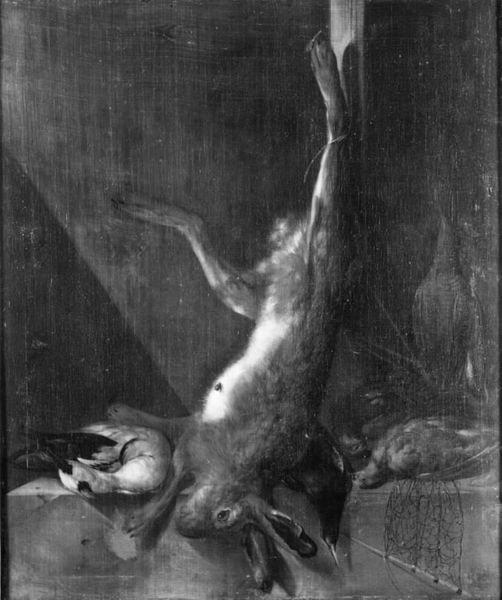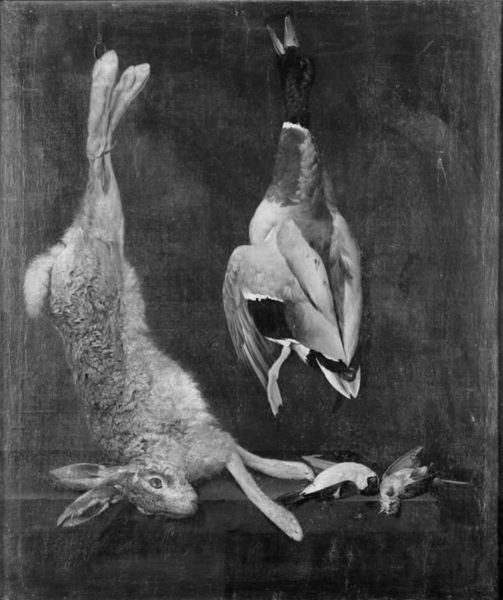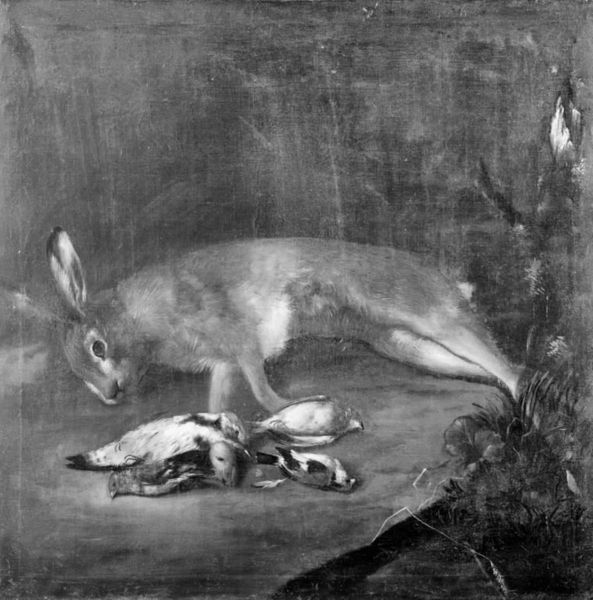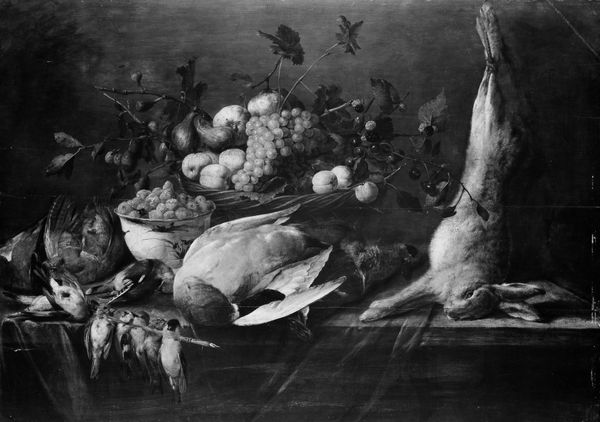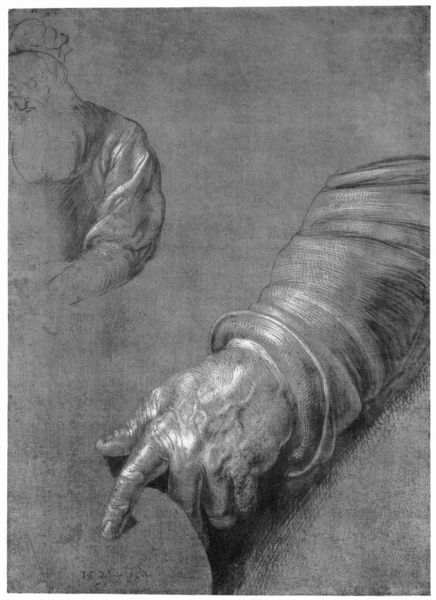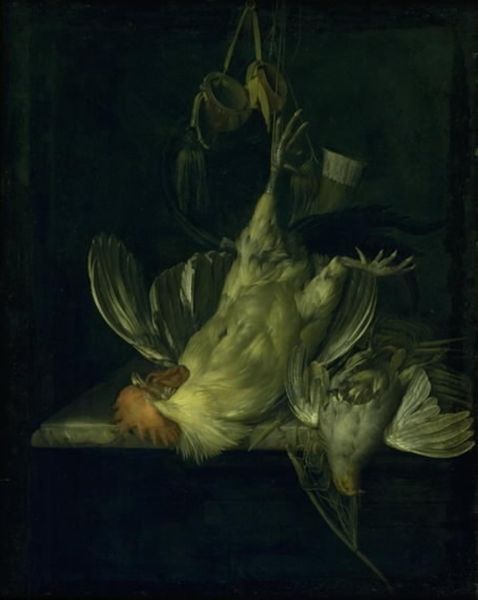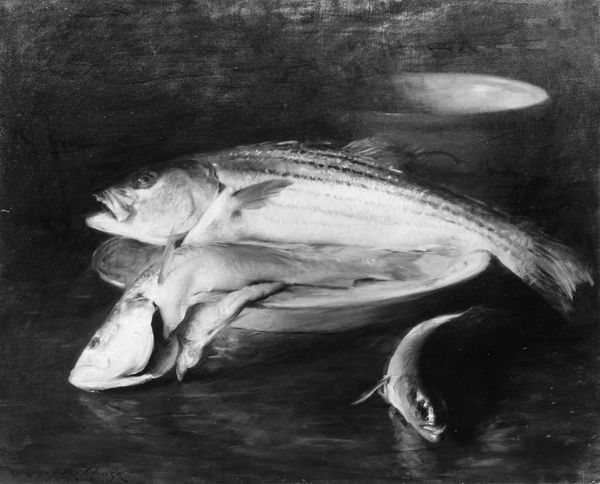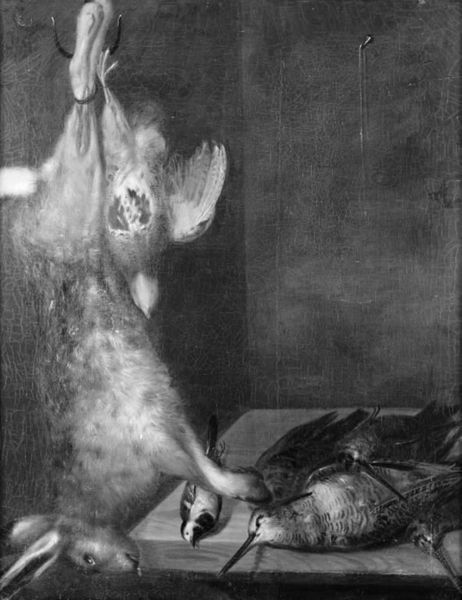
painting
#
baroque
#
dutch-golden-age
#
painting
#
charcoal drawing
#
charcoal
#
graphite
#
monochrome
Dimensions: 58 cm (height) x 52.5 cm (width) (Netto)
Curator: This haunting still life, dating from between 1652 and 1666, is entitled "A Dead Cock" and it's attributed to Matthijs Bloem. You can see it here at the Statens Museum for Kunst. What's your immediate take on this somewhat morbid composition? Editor: Bleak, definitely bleak. The dramatic lighting certainly emphasizes the stark textures—the smooth drape of the cloth against the rough, lifeless plumage. There's an undeniable artistry in capturing such textures in monochrome, yet it's difficult to avoid a sense of almost unsettling desolation. Curator: Absolutely. Considering the broader social context, though, the "still life" as a genre gained traction in the Dutch Golden Age. These weren't mere decorative pieces. The items depicted, like this dead cock, carried layers of symbolism reflecting wealth, morality, and vanitas. Editor: Precisely! And analyzing purely from a formal standpoint, notice how the artist deliberately places the bird against an austere background, a formal strategy to throw focus onto the stark contrast between life and death. The upward lines of the legs contrasted by the bird's hanging pose create visual tension. Curator: This contrast you observe reflects the prevailing cultural norms. It’s important to understand these images of dead animals often carried messages about human life, death and earthly pleasures—particularly relevant considering the period’s intersection of burgeoning wealth and Calvinist values. Was the rooster, for example, included to symbolize Christian virtues, virility, lust or, indeed, pride? Editor: I see your point entirely, how such an analysis reveals multiple interpretive pathways to meaning, none definitive, but suggestive. Even if not intended this way, we read these connotations in the image, even if it begins as an observation of pure form. Curator: I agree, art interpretation isn't just about appreciating composition or brushwork. It’s about understanding how artistic expressions intersected with historical, social, and ethical dimensions, encouraging conversations across time. Editor: Quite right. On balance, it makes for compelling work and gives us so much to unravel with just a little formal curiosity. Curator: Indeed, these old works can show us a new path.
Comments
No comments
Be the first to comment and join the conversation on the ultimate creative platform.
